“At 26, I couldn’t walk two blocks without wheezing. I kept my inhaler closer than my wallet. I dreaded the change of seasons. And while meds kept my symptoms in check, I never truly felt in control until I found yoga”. This is the case for many Asthma sufferers.
Let’s walk you through the best yoga for asthma, including simple poses and calming breathwork, and explain how they can help.
Why Yoga Isn’t Just ‘Nice To Have’ For Asthma Sufferers
When you’re dealing with asthma, most solutions focus on short-term relief. Inhalers, medications, and breathing aids help manage the moment, but they don’t always address the root of the problem. Yoga for asthma takes a different approach.
It works from the inside out, gradually improving lung capacity, reducing stress-driven flare-ups, and helping you develop a deeper awareness of your breath. Over time, this can make a noticeable difference in how your body responds to triggers.
And there’s solid evidence to support it.
A 2020 study published in the Journal of Ayurveda and Integrative Medicine reported a significant improvement in pulmonary function among asthma patients who practised yoga regularly.
This isn’t just a wellness trend. It’s a proven, supportive practice that helps you build control, not just over your breath, but over how your body reacts to asthma in the long run.
Asanas That Help You Breathe Freely (Yes, It Works)
If you’ve ever felt your chest tighten or your breath shorten during a stressful moment, you already know how sensitive the respiratory system can be. That’s exactly why asanas for asthma are so effective; it focuses on chest expansion, spinal alignment, and relaxation, all of which are crucial for managing asthma symptoms.
These poses are not just calming, they’re purposeful. Backed by physiology and experience, each one works to support better breathing patterns, reduce tension, and make space where your lungs need it most.
1. Bhujangasana (Cobra Pose)
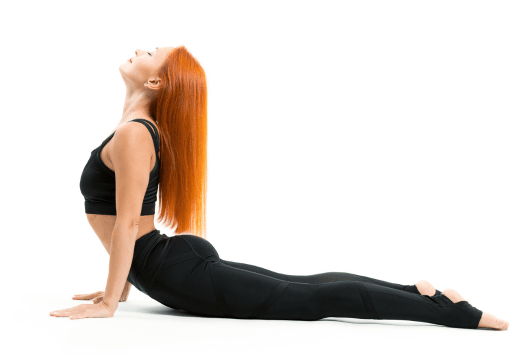
This gentle backbend opens up the chest and stretches the lungs, encouraging deeper inhalation. It also strengthens the muscles around the ribcage and spine, key areas involved in breathing.
How to do it:
Lie flat on your stomach with your legs extended and the tops of your feet resting on the floor.
Place your palms under your shoulders, elbows close to your body.
Inhale and slowly lift your chest off the ground, using your back muscles more than your hands.
Keep your elbows slightly bent and your shoulders relaxed.
Hold for 15–30 seconds, taking deep breaths. Exhale and gently lower back down.
Why it works: Expanding the thoracic region improves oxygen intake and reduces the feeling of tightness that many asthma patients experience.
2. Setu Bandhasana (Bridge Pose)
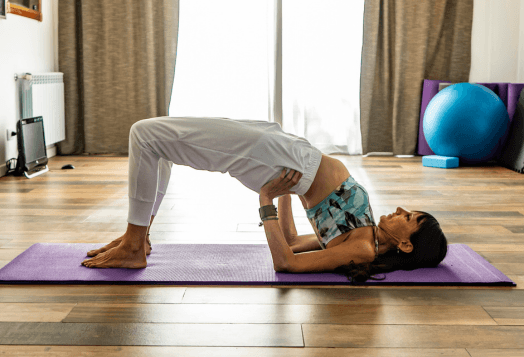
More than just a spinal stretch, this pose gently lifts the chest and releases built-up tension around the diaphragm. It’s particularly helpful for people whose posture compresses their lungs, often making breathing feel restricted.
How to do it:
Lie on your back with knees bent and feet flat on the floor, hip-width apart.
Keep your arms alongside your body with palms facing down.
Inhale and press your feet into the floor as you lift your hips toward the ceiling.
You can clasp your hands underneath your back for support or keep them flat.
Hold for 30–45 seconds, breathing slowly. Exhale and lower your hips gently.
Why it works: The arch created in this pose allows full lung expansion and reduces shallow breathing, making it an ideal asana for preventing asthma symptoms.
3. Sukhasana with Twist
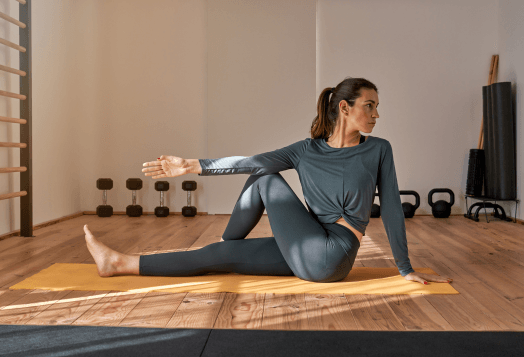
Don’t underestimate the power of this seated twist. When performed mindfully, it stimulates the abdominal organs, helps improve digestion, as explored in yoga for digestion, which can sometimes impact breath, and gently massages the lungs.
How to do it:
Sit cross-legged on the floor in a comfortable position (use a cushion if needed).
Keep your spine tall, shoulders relaxed, and hands resting on your knees.
Inhale deeply, then place your right hand on your left knee and your left hand behind your back.
Exhale and gently twist your torso to the left, keeping your hips grounded.
Stay for 20–30 seconds, breathing slowly and evenly.
Inhale to come back to the centre. Repeat on the other side.
Why it works: Twisting encourages the release of stale air trapped in the lungs and supports detoxification, allowing you to inhale more freely.
Pranayama Techniques That Help Asthma Control
While asanas open the body, pranayama for asthma focuses on regaining what asthma often disrupts: breath control. These simple breathing techniques help improve lung capacity, calm the nervous system, and reduce stress-induced flare-ups.
Backed by research, regular pranayama practice improves oxygen flow, strengthens the diaphragm, and lowers respiratory distress. Here are four techniques that truly make a difference:
1. Anulom Vilom (Alternate Nostril Breathing)
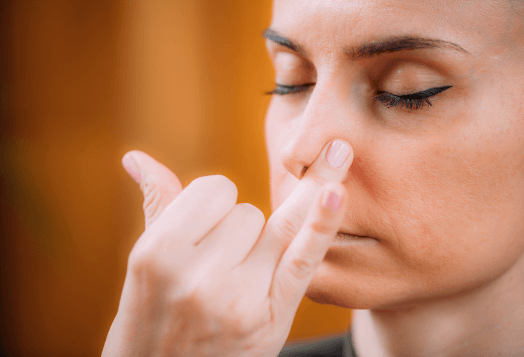
The best pranayama for asthma is one that helps calm the system and balance airflow.
How to do it:
Sit comfortably with your spine erect.
Close your right nostril with your thumb and inhale slowly through your left nostril.
Close your left nostril with your ring finger, release your right nostril, and exhale through it.
Inhale through the right, close it, and exhale through the left. That’s one round.
Repeat for 5–10 minutes daily.
Why it works: This technique balances oxygen-carbon dioxide exchange, regulates nervous system response, and lowers stress, a key asthma trigger. It’s gentle and safe for beginners.
2. Bhramari (Humming Bee Breath)
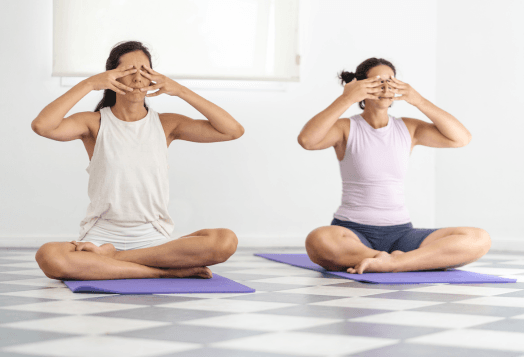
A powerful tool for stress-induced asthma and anxiety management, complementing practices like those in yoga for the heart.
How to do it:
Sit in a quiet spot with your eyes closed.
Take a deep breath in.
As you exhale, gently press your index fingers on the cartilage of your ears and hum like a bee.
Focus on the vibration and sound.
Do 3–5 rounds slowly.
Why it works: The humming sound stimulates the vagus nerve, reducing tension in the chest and helping the airways stay open. It’s deeply relaxing and beneficial before bed or during high-anxiety moments.
3. Ujjayi (Victorious Breath)
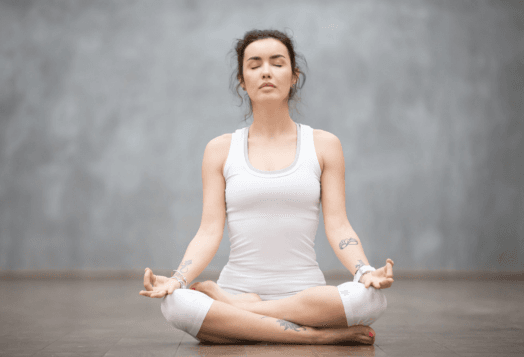
Often used in yoga flow, this exercise is also great for improving breath control and lung endurance.
How to do it:
Sit upright and inhale deeply through your nose.
Slightly contract the back of your throat while exhaling through the nose to create a soft ‘ocean’ sound.
Keep the breath smooth and even.
Practice for 5 minutes, gradually increasing duration.
Why it works: Ujjayi strengthens the respiratory muscles, slows the breathing rate, and improves oxygen efficiency, making it ideal for managing mild breathlessness without panic.
4. Deep Diaphragmatic Breathing

Perfect for asthma patients who tend to breathe shallowly from the chest.
How to do it:
Lie on your back with your knees bent.
Place one hand on your chest and the other on your abdomen.
Inhale slowly through your nose so that only your belly rises.
Exhale slowly through pursed lips.
Practice for 10–15 minutes daily.
Why it works: It trains your diaphragm, increases lung capacity, and reduces reliance on upper chest breathing, which often triggers asthma discomfort.
It’s Not About Doing More, Just Doing It Regularly
Let’s be honest, doing one yoga pose once a week won’t change your lungs. But show up consistently, even for 15–20 minutes a day, and you’ll start to notice real shifts.
What matters most isn’t the number of poses, but your commitment to the right ones. When done regularly, a focused yoga routine can:
Ease asthma symptoms and reduce flare-ups
Improve oxygen intake and lung efficiency
Lower your reliance on quick-relief inhalers
Help you manage anxiety and sleep more peacefully
And the best part? You don’t need fancy equipment or a gym subscription.
Just a mat. A quiet space. And a few mindful minutes each day.
Precautions While Practising Yoga for Asthma
Yoga is generally safe for asthma patients, but it’s important to approach it mindfully. The goal isn’t intensity, it’s ease and breath awareness. Here’s what to keep in mind before you start:
Avoid holding your breath during any asana or pranayama.
Skip deep backbends or poses that compress the chest.
Steer clear of hot yoga or intense vinyasa flows that may overstimulate breathing.
Never reduce your medication without speaking to your doctor.
Practice in a clean, calm space with good ventilation.
Consult a yoga professional if you’re unsure of your form or pose intensity.
The golden rule? Let your breath guide your practice. If you can’t breathe comfortably in a pose, back off.
Complement Your Practice With These Tips
Getting results from yoga isn’t about complexity; it’s about consistency and support. Along with your daily practice, a few mindful choices can significantly impact how your body responds.
1. Stay hydrated
Dry airways can make breathing more difficult. Keep a water bottle nearby, hydration helps thin mucus and supports lung function naturally.
2. Practice 3–4 times a week
Even short sessions (15–20 minutes) can improve lung capacity and lower symptom frequency over time. The key? Stick to it.
3. Avoid heavy meals before your session
Aim to practise yoga on an empty stomach. This gives your lungs and diaphragm the space they need to move freely.
4. Pair yoga with mindfulness
Try combining your routine with calming activities, such as journaling, deep breathing, or a short evening walk. This can help reduce overall stress, a major asthma trigger.
5. Track your progress
Keep a simple log of symptoms, energy levels, and breathing comfort. It’s a great way to notice subtle improvements and stay motivated.
Tried Before and Struggled? Here’s How to Start Again (and Stick With It)
Starting something new, especially for your health, can feel overwhelming. But you don’t need to change your life overnight. What you need is a routine built around your real life, not someone else’s idea of perfect practice.
This is where a certified yoga professional can make all the difference.
They’ll help you:
Recommend the right asana for asthma based on your needs
Adjust the flow according to your energy levels.
Build a structure that feels realistic, not restrictive.
It’s yoga for you. Designed to help you breathe a little easier, physically, emotionally, and every way in between.
You don’t have to feel breathless forever. With the right guidance and a little patience, you can build strength from the inside out, one breath, one pose, one day at a time.
Disclaimer: This article is intended for informational purposes only and is not a substitute for professional medical advice, diagnosis, or treatment. Always consult your doctor or a certified healthcare provider before starting any new exercise, yoga routine, or breathing technique, especially if you have asthma or other respiratory conditions.




